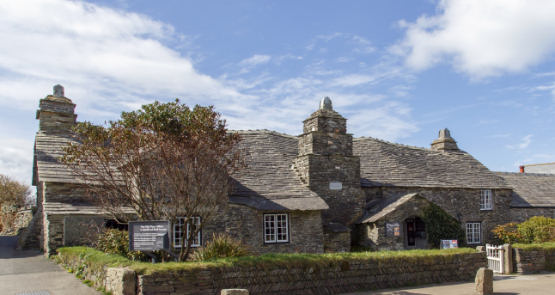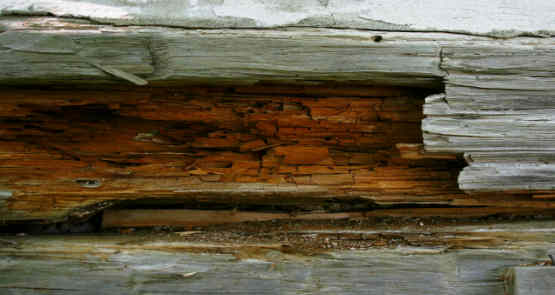Historical & Listed Building Maintenance Covering Plymouth, Devon & Cornwall
Records show that at present there are approximately 500,000 listed buildings in the UK and around 90% are actually listed as a Grade 2. List buildings are graded into categories.
- Grade 1 listed buildings are of exceptional importance and interest
- Grade 2 listed buildings are of special interest being particularly importance
- Grade 3 listed building are of the most special interest and every effort should be made to save and preserve them
When carrying out a survey for treatment to a listed building the problem of structural integrity, fungal attack, timber decay, woodworm, beetle infestation and damp need professional consideration in regard to nature and kind of work and method of work than is allowed to be undertaken along with the correct material to be used.
When a building has been marked as listed or if it is situated within a conservationist area you must seek consent from the Local Planning Authorities prior to any amendments are carried out to the building in question. Consent from the Authorities can be applied for via formal application to the local council and advice can be obtained from the local conservation officer. You must abide and adhere to strict legal requirements as set out for Listed Buildings and Conservation Areas Act 1990. This Act is added to with other government guidance notes and documents to include the National Planning Policy Framework that was actually published in March 2012. There are also other important organizations such as the National trust and English Heritage. Failing to comply to these rules and if unauthorized work is carried out the consequences can be considered as an offence leading to prosecution.


Church preservation
Restoration, maintenance and repairs to religious buildings require a similar considerate approach as to a listed building. Listed Building Consent is not needed but planning permission will be a requirement along with building control and due consideration of the works will be looked at so as not to change the buildings appearance or character.
Here at Plymouth Damp Proofing (PDP) we consider listed buildings as historical and we would like to keep them that way. We understand the importancy in taking suitable care and attention when working on historic listed buildings. We are here to assist you and offer our experience, knowledge and know how to provide your property with the care and attention it merits. If it’s a survey diagnostic, just advice and recommendations or just a competent team to carry out the works please feel free to give us a call.
Damp in historical listed buildings
When performing a survey on a historic listed building it is not uncommon to get a number of damp readings from the meter around the property. High damp readings from buildings of special interest or listed are expected and not unusual. The building will require compassionate understanding and treatment can be undertaken in the correct manner or the consideration may be just to manage any moisture ingress and migration by means of suitable ventilation and heating systems.
Attending to damp problems
If severe damp readings are recorded it would be our normal recommendation to install a remedial chemical damp proof course DPC to quite possibly well be potentially inappropriate render masonry or perhaps the insertion of a chemical damp proof course will achieve nothing whatsoever. It is often the case that this approach is not always the best solution to take and not the correct diagnosis due to the fact that the building is unique in its nature being listed so the treatment should reflect this. Modern water proofing treatments products are not recommended as a standard matter of course.
Hearthside fireplaces, sand stone surrounds and chimneybreasts usually always show significantly high moisture content reading on modern moisture meters. This is because of hygroscopic salts naturally present that very well may have been deposited there in the wall over many years of burning fossil fuels. So you see to install a chemical DPC would have no effect whatsoever but it is still common to recommend it.
If lateral penetration damp is present the source of the water moister must be eliminated first. This is standard practice with any building. Once this has been achieved the damp areas need to be allowed to dry out naturally, the use of dehumidifiers can help with this and there are some considerate surface treatments that may be used. This eliminates the need to drill and inject. This is not always acceptable as there could well be just too much damage. If that is the case then different substitution surfaces will need to be discussed agreed and applied.
Choosing the correct render
When carrying out damp treatments the render quality used is just as important as having an effective damp proof course installed. Applied correctly it plays a major part in relieving the damp presence so it is most important that the render being used is of a quality fit for purpose for approved waterproof specification to the material it is applied onto. Nowadays it is usually a cement based render. One coat lightweight renders should always be avoided when carrying out damp remedial treatment works.
Also local conservation officers do not ideally like the use of cement-based renders, they do much prefer the use of traditional methods and materials such as lime based render.
You can understand their theory but the practicality is not always possible because the lime in the mix does not act efficiently as a vapour or moisture barrier, consequently when damp is the major issue it is necessary to use cement based renders with an additional water proofer solution added to the mix. This will be a much more practical method giving long-term piece of mind. Another name for lime render is heritage render, which is always recommended by English heritage. It allows the treated walls to dry out naturally and breath so as the moisture can evaporate easier into the atmosphere rather can be soaked up and absorbed by the internal stonework. This again is not always practical; as the lime within the mix will inevitably lower the waterproofing efficiency of the mix so will not be an efficient vapour or waterproof barrier and will not prevent moisture migration of hydroscopic salts into the internal surfaces from the masonry resulting in having a substantial damaging effects to the internal plaster and decoration.
Alternatives
Today on the market there are modern acceptable alternatives that do not use lime based render or cementitious products. Cavity drain membranes or what some people call an air gap membrane are extensively used in the battle against damp in all buildings. Of course this again is not practical everywhere so where the use of modern waterproof cementitious based render is the only option available you must seek listed building consent so as to gain the correct approvals from the local Conservation Office. Should this then lead to internal problems such as unsightly effervescence you can use salt neutralizing solutions, which can be applied, directly to the effected areas of the internal walls. It is a known fact that modern cement based waterproof renders has been applied to Grade 1 Listed Historic Buildings before with no detrimental effect on the building look and appearance.
Some District Councils require Listed Building Planning Consent and ask on their website that non-reversible damp proofing methods are used but not the use of air gap or cavity membranes. This is frustrating to say the least, as air gap membranes are indeed fully reversible.
There are other methods to battle damp such as using a DPM coat of bitumen. The problem is with this method though is its only a short term fix so in reality it really should be avoided. For moisture retaining walls and solid floors the use of a hardwearing epoxy resin providing a permanent solution method, but a membrane is always a better option where possible.
Condensation
Condensation is significant with modern living habits a the way we live each day by balancing the use of ventilation, our heating, cooking, security and the cost implication. When this balance breaks down between ventilation, cooking and heating you get condensation problems. This can vary from a lack of suitable window vents to a lack of suitable sub floor ventilation inside a suspended or mezzanine timber floor.
Condensation within listed buildings is not a common problem due to them being practically drafty with very large air circulating rooms; single glazed sliding sash windows producing a lot of natural ventilation circulating around the building. However, as older buildings are being modernized with more efficient windows and doors, condensation can raise its head and be more of concern.
Plymouth Damp Proofing (PDP) can offer suitable controlling units to prevent condensation from occurring so please feel free to call us where on of our experts will be happy to chat with you. Of if you require further information please look here at our Condensation page.


Timber preservation to a historic building or property
Historic Listed buildings are usually constructed from both softwood and hardwood but some can only contain hardwood. This was often reclaimed timber previously used in things such as retired horse drawn carriages, other construction projects being taken down or in particular around the cost timbers reclaimed from retired ships. Unavoidably the timbers reclaimed are not always true to shape and square. They can have crevices, shakes with unrelated joints and in their lifetime seen infection from beetle attack or a wood-boring insect. For more information please look here at our Woodworm page
Wet & dry rots fungal attack to timber
For correct diagnosis and identification of any form of fungal attack it is recommended that the services of an experienced expert be employed.
Wet rot outbreaks usually are localized. The removal of the moisture source usually always results in the collapse and removal of the fungi in question and timber remedial repairs as required.
Serpula Lacrymans or better known as Dry Rot, this will require the services of an experienced specialist to completely eliminate the outbreak and should be treated with extreme caution at all times. The source must be correctly identified and the correct treatment diagnosed. Dry Rot is known to rapidly spread throughout a property and can cause sever structural building defects. After treatment and eradication a long-term underwritten guarantee should be issued by the PCA registered company employed to do the works.
Another fungal pest is Wet Rot. There are in fact approximately 20 species of wet rot and it is often commonly mistaken for Dry Rot. But in definition wet rot is unique in the way it cracks and cuboids the timber and it crumbles to dust between your fingers, rather than Dry Rot that becomes fibrous. Dry and wet rot in listed historic buildings is usually a result of a condensation build up. When a property has been left vacant for a period of time localized condensation producing the perfect environment to encourage the germination of fungal spores onto timber.
Beetle & woodworm attack on timber
Insects such as the Anobium Punctatum better known as the Common Furniture Beetle or the Xestobium rufovillosum better known as the Deathwatch Beetle, make small holes in timber which are usually flight holes and when visually spotted it is common to mistake it as an active infestation when in reality the infestation is inactive and the timber usually completely solid.
A common mistake is to bang against the timber with your hand, fist or hammer and see falling bore dust left from a previous infestation. This dust can be present inside the timber for years without doing any harm whatsoever. As the timber is knocked banged or dislodged the falling dust is often mistaken as a new active infestation but it’s not always the case.
As a rule the indication of infestation to old timbers should be viewed as normal. Our recommended would not be to perform a blanketing treatment of all hardwood timbers within a property apart from any softwood usually located in loft roof areas that are easily accessible. When using modern timber treatment products, their use should only be to the actual area in question that has been confirmed as an active infestation. This is usually applied to softwoods or it can be applied to hardwoods where they adjoin onto softwood or if a hardwood contains an unusual amount of moisture content and rot usually where the timber is built into a masonry wall incorrectly with no wrap of DPM or damp proof membrane to protect it. Thatched roofs can also be treated but in doing so the use of water based non flammable materials are used.
Some species of beetles such as the Euophryum Confine or better known as The Wood Boring Weevil Beetle do not require any treatment whatsoever. Usually the larva of the beetle is the culprit causing all the damage but in this case it’s the adult beetle causing the damage. Simple eliminate the moisture source and let the timbers dry out will result in the infestation leaving by their own accord thus not needing to use any chemical treatment.
Another species of wood boring beetle such as the Ernobius mollis, or better known as The Bark Borer Beetle uses the bark as its food source. If active simply remove all the bark thus removing it's food source so eliminating the infestation. They can also be mistaken as an active infestation calling for chemical treatment when in reality it's inactive and historic.


How to identify an active infestation?
We all heard someone say they have woodworm. It is used generically as a beetle infestation term as the larva being wormed like usually creates all the damage. It is always essential to employ the services of an expert so as to obtain the correct diagnosis. Here at Plymouth Damp Proofing (PDP) can assist you in covering many different species of wood boring beetle so we can make the correct identification of your problem.
There are a few methods available for us to use such as analyzing the size of the flight holes and bore dust or frass. Capturing an adult beetle, or reading the moisture content in the timber along with the present time, month and year we can usually piece it together.
Treating an active infestation
Once an active infestation of beetle is identified the sensible course of action is to isolate the area completely and carry out the suitable treatment diagnosed maintaining regular monitoring on a six month to yearly basis especially during the active seasons. This can vary depending on the species in question. However, as a general rule of thumb the months from March to July are for the Deathwatch Beetle species and to August or even September for the Furniture Beetle species.
In the UK historic listed building suffer the effects greatly from the Deathwatch Beetle as the beetles favorite food oak. Once infested to eradicate it can be a major task. The infestation is usually found in timber already suffering from rot or high moisture content. Detection of infestation is only achievable by seeing the flight holes present; because of this the infestation has plenty of time to become well established before it is identified. Modern methods of timber treatment insecticides focus on breaking the beetles’ infestation cycle from larva to adult. So total eradication will be for a similar period of time. New emerging adults will still occur for a few years more depending on the species until complete eradication is achieved.
Deathwatch Beetle cycle to fly out can be from 5 to 10 years but there have been cases of 20 years cycles being known. This is all dependable on the type of timber infested and its moisture content. The Common Furniture Beetle cycle to fly out is at present about 3 years but there have been cases of 5 years cycle being known.
Very few reports of the Deathwatch Beetle have been reported in Ireland and it is rarely found in Scotland. They have become well established in southern England but are also commonly found throughout the country and in Europe.
Structural repairs to historical buildings
If a building is constructed from any form of masonry they is always a chance of structural cracking causing instability, failing lintels and even ground movement. If this is the case there are a number of remedial works that can be carried out to rectify the problem.
A few available remedial measures that can be used are:
- Bespoke anchor system
- Lateral restraints
- Mortar bed reinforcement
- Under pinning
- Crack stitching
It is recorded that the Romans actually used cavity walls in their construction so this theory is not limited to modern properties but should be considered when describing the repair solution. Furthermore the building may well be of a more modern day design. Whatever the outcome a fixing will be required between the outer and inner skins of masonry. They can be either slate, metallic or brick fixings employing a remedial fix eliminated the option of a knock down and complete rebuild. These options are always available and need to be surveyed first.
Timber resin repair
If you find a structural defect within a major supporting structural timber beam or rafter it may not always be necessary to completely remove it and replace it which will undertake major works. There are on the market today approved ways of sectional replacement of timbers that use epoxy resin in combination with embedded steel bars pre cut into hardwood timber sections that can replace decaying rotten section of timber without the need to replace the entire beam and would re-establish the timbers structural integrity for many years to come.
Bat laws
Should you find bats in a domestic property a bat roost needs to be advised to the necessary bodies prior to an application submitted for remedial works and treatment? If these works involve any demolition then DEFRA need to be notified prior to any work commencing.
Legislation allows remedial works or building maintenance to be performed In every day house dwellings that bats occupy. However, English Nature Reserve need to be informed prior to works commencing so as time is allowed to analyze the situation so as a decision can be made if the work can go ahead or not and if so the correct method and precise timing of the work may be applied.
If you would like to know more about English Nature who are the Government advisory body regarding bats please use the purple link for their website.
Should you have any concerns regarding any of the above issues, please contact Plymouth Damp Proofing (PDP) and make use of our 5 star services where a member of our historical building surveying team will be happy to help you.
Our Warranty/Guarantee
We are proud to say we take pride in our reputation and how we work. Upon completion of our works you will receive our personal workmanship warrantee along with our guarantee and a manufactures guarantee protected and backed up by the Guarantee Protection Insurance Scheme or (GPI).
We are also looking to become members of the Property Care Association, CHAS, Construction Line and Trust Mark for your peace of mind. All our warranty and guarantees are transferable to new owners of your home if you sell your property.
What lengths of guarantee do we offer?
- Basement water proofing treatments will receive a 10-year guarantee
- All Woodworm treatments, Dry Rot, Wet Rot and Rising Damp will receive a 30-year guarantee
- Timber unit and window treatments will receive a 5-year guarantee
- As an extra on request we can issue an independent insurance backed guarantee


Every case of damp is different and depending on the scale and size of the problem costs to repair will vary. It is important that you have your property surveyed and an individual and specific report completed as soon as possible. Our service gives each customer an individual report with recommendations and quotation to fix the damp problem. To make sure we are giving you an accurate price, one of our surveyors will come to your property to investigate the problem. Once your property has been assessed we will discuss the findings with you and detail the way forward.
Our services we supply in short:
- Damp proofing advice & support
- Damp Surveys
- Basement waterproofing
- Rising damp treatments
- Condensation treatments & control
- Woodworm Treatment
- Wet rot & dry rot treatments
Remember your property is at risk if you let damp set in and do nothing about it!
Please feel free to contact us for further advice
If you are concerned about any of the above issues affecting your property, please contact us and a member of our team will be happy to help, as we are Specialists in Property Surveying.



